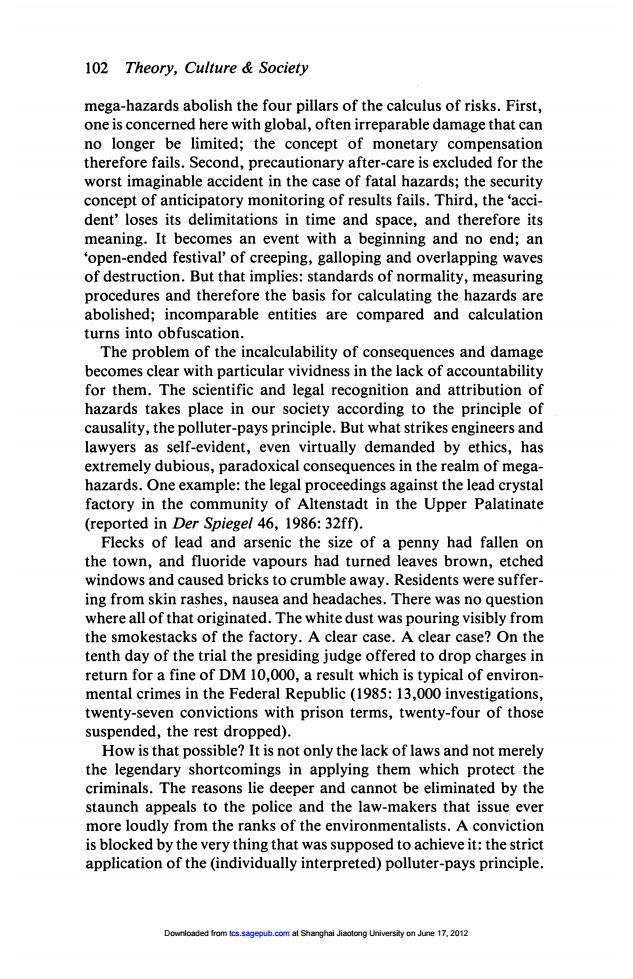正在加载图片...

102 Theory,Culture Society mega-hazards abolish the four pillars of the calculus of risks.First, one is concerned here with global,often irreparable damage that can no longer be limited;the concept of monetary compensation therefore fails.Second,precautionary after-care is excluded for the worst imaginable accident in the case of fatal hazards;the security concept of anticipatory monitoring of results fails.Third,the 'acci- dent'loses its delimitations in time and space,and therefore its meaning.It becomes an event with a beginning and no end;an open-ended festival'of creeping,galloping and overlapping waves of destruction.But that implies:standards of normality,measuring procedures and therefore the basis for calculating the hazards are abolished;incomparable entities are compared and calculation turns into obfuscation. The problem of the incalculability of consequences and damage becomes clear with particular vividness in the lack of accountability for them.The scientific and legal recognition and attribution of hazards takes place in our society according to the principle of causality,the polluter-pays principle.But what strikes engineers and lawyers as self-evident,even virtually demanded by ethics,has extremely dubious,paradoxical consequences in the realm of mega- hazards.One example:the legal proceedings against the lead crystal factory in the community of Altenstadt in the Upper Palatinate (reported in Der Spiegel 46,1986:32ff). Flecks of lead and arsenic the size of a penny had fallen on the town,and fluoride vapours had turned leaves brown,etched windows and caused bricks to crumble away.Residents were suffer- ing from skin rashes,nausea and headaches.There was no question where all of that originated.The white dust was pouring visibly from the smokestacks of the factory.A clear case.A clear case?On the tenth day of the trial the presiding judge offered to drop charges in return for a fine of DM 10,000,a result which is typical of environ- mental crimes in the Federal Republic (1985:13,000 investigations, twenty-seven convictions with prison terms,twenty-four of those suspended,the rest dropped). How is that possible?It is not only the lack of laws and not merely the legendary shortcomings in applying them which protect the criminals.The reasons lie deeper and cannot be eliminated by the staunch appeals to the police and the law-makers that issue ever more loudly from the ranks of the environmentalists.A conviction is blocked by the very thing that was supposed to achieve it:the strict application of the(individually interpreted)polluter-pays principle. Downloaded from lcs.sagepub.com at Shanghai Jiaotong University on June 17,2012Downloaded from tcs.sagepub.com at Shanghai Jiaotong University on June 17, 2012